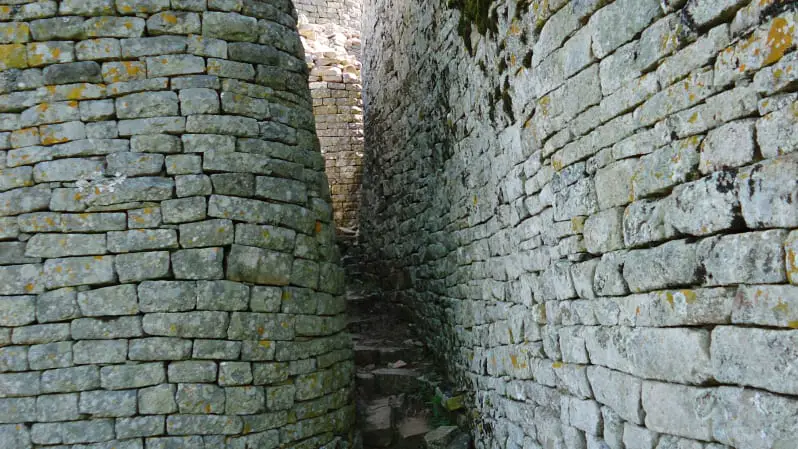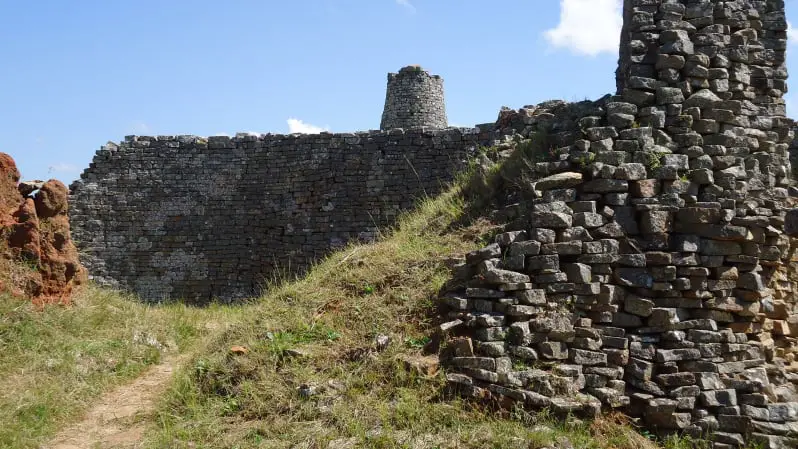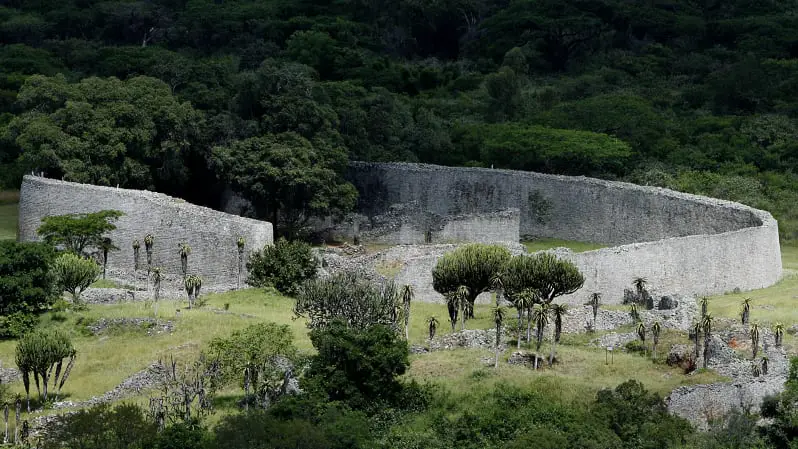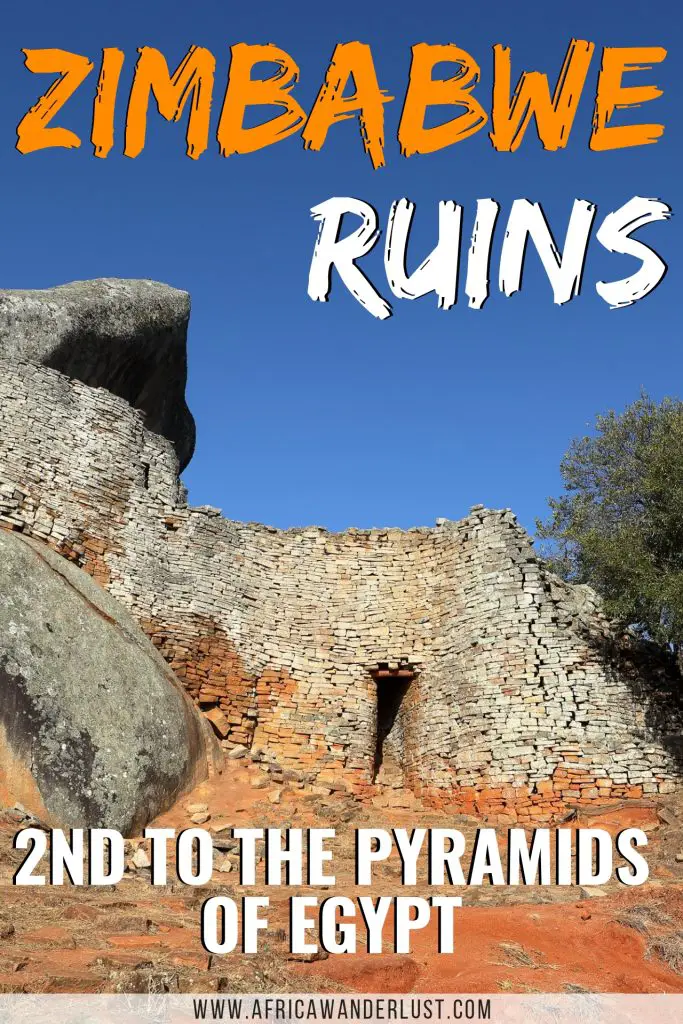This post may contain affiliate links which means we may get a commission if you make a purchase at no additional cost to you. As an Amazon Associate we earn from qualifying purchases. Please read our disclosure for details.
"Each product we feature has been independently selected and reviewed by our editorial team. If you make a purchase using the links included, we may earn a commission."
Many ruins around the globe that have become notable tourist attractions. The Acropolis in Greece, Pompeii, Arundel Castle in the UK and to a degree, the pyramids in Egypt. However, equally, as notable attractions exist that do not get the attention they deserve like the Great Zimbabwe Ruins.

A perfect example of one of the notable tourist attractions is the Great Zimbabwe Ruins; yes, the granite blocks soapstone birds sculpture with a vast amount of outer walls built that dates back to between the iron age and the 19th century.
The Great Zimbabwe Ruins is a national monument that attracts tourists from around the world to the south of the Sahara in the southern Africa region.
The Back Story on Ancient Zimbabwe Ruins
Many people are very aware of the more recent history of the Zimbabwe empire with the rise and fall of the Mugabe regime that saw a once-thriving economy crumble into a mess of hyperinflation and land invasions that have left Zimbabwe on its knees.
However, as present-day Zimbabwe seeks to recover from a recent past, the much older past is helping grow tourism in Zimbabwe. Something perhaps a little less “African” or “Safari” than most tourists would expect from the region is playing an essential part in tourism growth.
The Great Zimbabwe Ruins
Embed from Getty ImagesThe massive ancient structure, second in size to the pyramids of Egypt is part of the once great Zimbabwe empire, now known as the Great Zimbabwe Ruins. Covering around 198 acres, the Great Zimbabwe Ruins can be found a few miles South East of Masvingo.
The ruins in the center of Zimbabwe are about 150 but much smaller ancient African ruins that can be found between Zimbabwe and Mozambique.
For anyone with a passion for exploring ancient ruins and uncovering a distant past, the story of the Great Zimbabwe Empire and a visit to the Great Zimbabwe Ruins create an unforgettable experience.
What is Known about Great Zimbabwe Pyramids
The Great Zimbabwe Ruins are part of what is referred to as the Great Zimbabwe Empire dating backing to a period from 1100 to 1500. The meaning of the word Zimbabwe is linked to the stone ruins of the country as the name literally means “Stone Houses” in Shona.

It may be no surprise to you that the Great Zimbabwe Ruins contain the remains of a vast number of stone houses. This is a far cry from the stereotypical image of huts in Africa at the time.
It is believed that the Central Zimbabwe ruins that are located in a vast valley was a thriving economic and social hub for between 10,000 and 20,000 people. The heart of the economy was very similar to what Zimbabwe has been well-known for, despite the challenges the nation has been through in recent times.
Agriculture, mainly cattle and crops, was a major part of the economy with trading gold as a currency between people from the inland territories to the coast of the relatively close Indian Ocean. Very little has changed in modern times on how the interaction with local traders as they barter.
The ruins are evidence that Zimbabwe can very much rise up again as the breadbasket of Africa.
What to See on the Great Zimbabwe Ruins Tour
Embed from Getty ImagesThe Great Zimbabwe Ruins cover a vast area and to really experience the site each of the three main areas should be visited and explored. The three parts include:
- The Hill Complex
- The Great Enclosure
- The Valley Ruins
Each gives clues of what life was like in the once-thriving Great Zimbabwe Empire.
The Hill Complex and the Great Enclosure are the primary areas dominated by the dry stone construction of houses and buildings interspersed with the ruins of mud and brick buildings.
The mud and brick structures are known as Daga and were assumed by many as more grandeur in design than the stone buildings. The Valley ruins have more significant numbers of the Daga buildings.
Zimbabwe Pyramids: The Largest Sub-Saharan Ancient Structure
There are primarily two points of interest for most visitors – the Hill Complex and the Great Enclosure. The first is the Hill Complex itself. Spiritual and religious activity was an essential part of ancient life in Africa, much as it is today.
The Hill Complex in the Great Zimbabwe Ruins is thought to have been a high fortified area or place of worship. This is the oldest part of these spectacular ruins, and at over 80 meters high, the Hill Complex is a real sight to see.
Embed from Getty ImagesDespite the size and importance of the Hill Complex, it is still small in comparison to the Great Enclosure. The Great Enclosure magnificent ancient structure is a sight to behold. The architecture is 250 meters in circumference and 38 meters tall in some areas.
However, what is mind-boggling is when you stop to think about how the materials for the construction were quarried, transported, carved, and laid to create an enormity of the Great Zimbabwe Ruins.
The Fall of the Great Zimbabwe Empire
No one understands why the seemingly thriving Great Zimbabwe Empire fell around 1500. The archaeological site points to several logical reasons, however, the main reason that supports the fall of an empire has not been determined in its entirety.

During the Great Zimbabwe decline, the skills of the people drifted to other regions of what is now called Zimbabwe.
Pottery and other essential crafts found throughout the country have their origins traced back to Great Zimbabwe prior to the fallen empire. In some ways, Great Zimbabwe did not really fall but instead spread out.
It took around another three to four centuries for the ruins to be recognized for what they indeed are – an African soapstone figurine created by the Shona people. The European and the Portuguese had some encounters with the ruins in the 16th Century.
However, the accuracy of the precise origin of the ruins originating from African and not European was only unearthed in the early 1900s with the actual findings being accurately documented in 1929.
The Great Zimbabwe Empire and the Great Zimbabwe Ruins are an exceptional part of the vibrant African history, and no visit to Zimbabwe would be complete without a visit to the site.

There are a growing number of tours to this historical site. Once you get a first-hand experience of the site, a broader, more profound story of Zimbabwe will come to life, leaving you changed and inspired.
Final Words About Great Zimbabwe Ruins
The development of the vast and vital ruins as part of a prosperous ancient economy is something that even by today’s standards is hard to comprehend building.
If you love learning about history and submerging yourself into experiencing other culture, the Zimbabwe ruins is a go-to destination for any traveler visiting the country.
You can also read our post on the 12 Safest Countries to Visit in Africa for other Africa travel destination ideas.
PIN FOR LATER!



I was very lucky to have been born in this beautiful country and to have visited these magnificent ruins and the thundering Victoria Falls (Mosi-oa-Tunya) ❤
Author
Hello Muffy, you’re lucky! What tips can you provide to our readers that related to traveling to Zimbabwe or its neighboring countries?
This is a fascinating read. I’m somewhat familiar with Zimbabwe’s history, but I like the way you have put so much perspective to it.
Author
Hello Pubali, I’m glad you enjoyed reading our post on the Great Zimbabwe Ruin, and it gave you a different perspective. That’s precisely our goal as we want to showcase the best places to visit in Africa so more travelers can add it on their list.
Wow, what a great place to visit – full of really important history and culture! I really enjoyed reading this and learning all this new stuff!
Author
Thanks for the comment, Jenn! I’m glad you like our post about the Great Zimbabwe Ruins. We would love to hear your feedback from other posts as well as information you need that we’re not providing yet.
Thank you for exposing me to a new piece of history. We love visiting ruins and now we can add these to our list! The history sounds very intriguing.
Author
Michelle, I’m glad you learned something from the post. Most people don’t know that the majority of African countries have a rich history and we want to share that information with everyone so that they can visit Africa.
I’d really love to have the opportunity to visit Africa!
Author
Ha, Sage, I agree with you. Once you take that first step, you’re going to love it so much that your life will never be the same again!
Interesting articles, I didn’t know anything about the Great Zimbabwe Empire and the ruins. I have always dreamt to visit Zimbabwe, now I have another reason to go!
Author
Hello Milena, hurry up and go already! 🙂 I have to double in my mind that you’re going to love it! Please let us know about your Africa experience. We would love to share it with our readers.
I love ruins and had never heard of these. The detailed guide to these ruins makes me want to go!
Author
I’m glad you enjoyed the blog post, Brenna! That’s exactly our goal with the Africa Wanderlust – to provide the best resource for those people that want to visit Africa.
Thanks for writing an in-depth article on Zimbabwe Ruins. I enjoyed reading the article. Do you plan on writing on other historic sites?
Author
Hello Chris, thanks for taking the time to read my post. I’m glad you found it helpful. Yes, I plan on writing on other historical sites. I’ll be sure to ping you once we work on those sort of posts.
I’m an amateur historian and I enjoyed reading your post. I plan on visiting Zimbabwe in the winter and I’ll have to stop by at the Zimbabwe Ruins.
Author
Hello James, thanks for stopping by on AW. I hope you enjoy your trip to Zimbabwe.